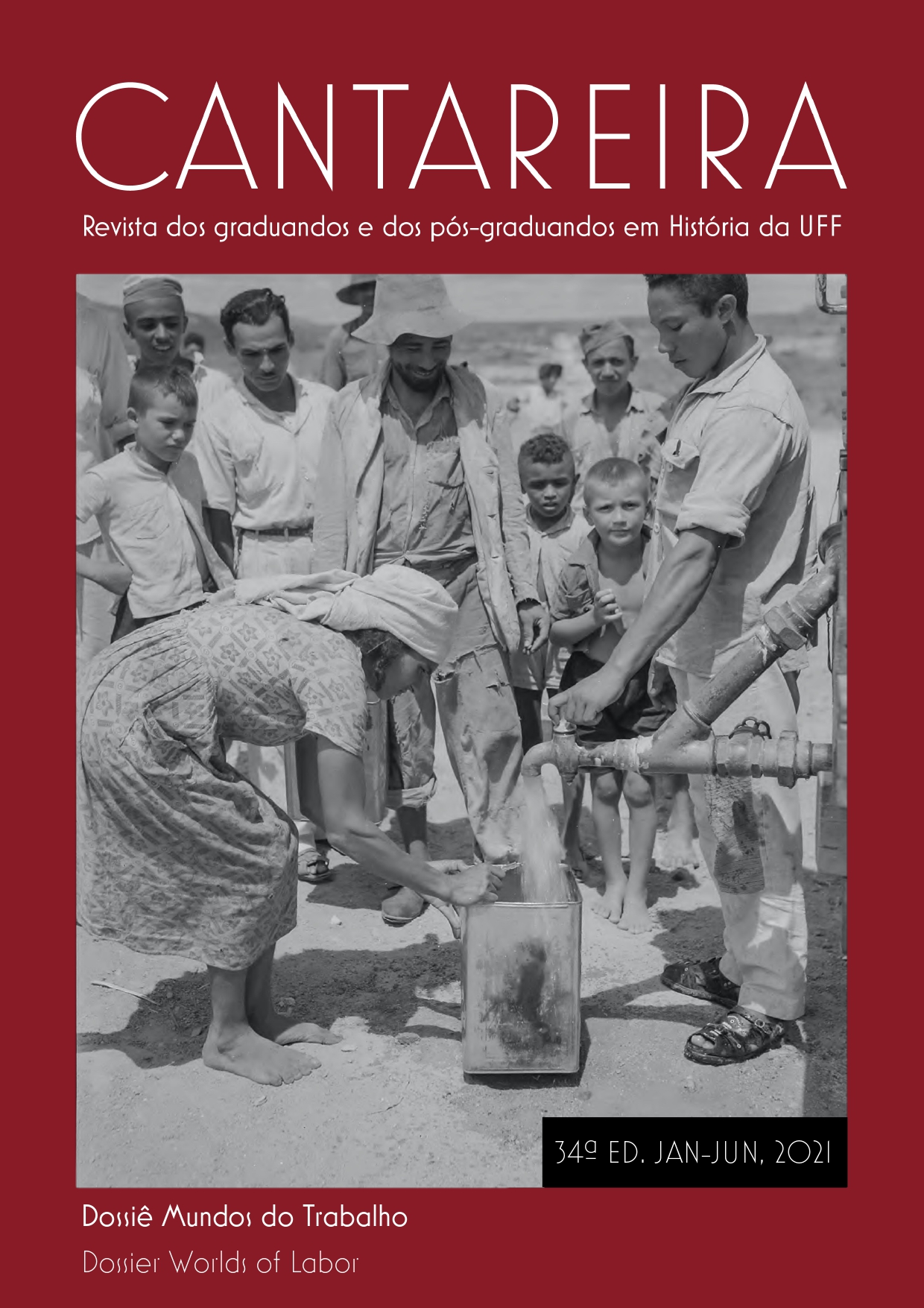Exploitation, the explosion of violence in Hollywood in the seventies
Keywords:
Gênero expolitation, Espetacularização da violência, Contracultura.Abstract
In this article, the violence will be captured by the cinematographic genre exploitation, both as an aesthetic language, as a communication device and meaning of the North American reality, a moment that brings together the largest number of exploitation works. The exploitation films stood out for the spectacularization of the violent scenes, showing the breaking of the moral values, that were one of the pillars of the traditional society until the advent of the counterculture. To this end, the genre will allow us to experience the violent daily life of the seventies, making it possible to address issues dear to the time, such as the limits that led to violent acts, as well, as the ethical-moral guidelines of American society in the counterculture years.
Downloads
References
BAPTISTA, Mauro. A violência no cinema americano contemporâneo – o policial. Comunicação e Política, v.1, n.2, mar. 1995. Rio de Janeiro, Cebela, 1995.
BATISTA, de Jesana (Org). Letras projetadas sobre fundo em movimento: palavras que dizem cinema. Aracaju: Edunit, 2014.
BLACK, D. Gregory. Hollywood Censored -Morality codes, Catholics, and the movies. New York Cambridge University Press, 1999.
______. Who controls what we see? Censhorship and the attack on Hollywood “immorality”.In: ROSS, Steven J (ed.). Movies and American Society. Blacwell Publishing, 2002.
BISKIND, Peter. Como a geração sexo drogas e rock n roll salvou Hollywood. Intrinseca. Edição Kindle. 2009.
BRANDO, Marlon e LINDSEY, Robert. Brando: Canções Que Minha Mãe Me Ensinou. São Paulo: Siciliano, 1994.
CHAVEZ, Andrés; CHAVEZ, Denize; MARTINEZ, Gerald. What it Is... What it Was: The black film explosion of the 70’s in words and pictures. New York: Hiperion,1998.
CHURCH, David. Grindhouse Nostalgia: Memory, Home Video and Exploitation Film Fandom. Edinburgh University Press, 2015.
ESPINAL, Luis. Consciência Crítica Diante do Cinema. São Paulo: Ed. LIC, 1976.
GORDON, Mel. Theatre of Fear & Horror: Expanded Edition: The Grisly Spectacle of the Grand Guignol of Paris, 1897-1962. Port Townsend, WA, 2016.
GUNNING, Tom. Uma estética do espanto. O cinema das origens e o espectador. In: Imagens, Campinas, n.5, ago.- dez. 1995.
HOWARD, Josiah. Blaxploitation Cinema: The Essential Reference Guide. England, UK: Fab Press, 2008.
KEHR, David. Foreword. In: NOURMAND, Tony; MARSH, Graham. Film posters exploitation. Colônia, Evergreen, 2005.
MATTOS, A. C. Gomes. A outra face da Hollywood: filme B. São Paulo. Rocco, 2003.
NAZÁRIO, Luiz. O cinema industrial americano. São Paulo, Nova Stella, 1987.
PATTERSON, James. Resteless Giant: The United States from Watergate to Bush vs. Gore. Oxford/ New York: Oxford University Press, 2005.
QUART, Leonard & AUSTER, Albert. American Film and Society since 1945. Santa Barbara/ Denver/ Oxford: Praeger, 2011.
ROCHA, Rosamaria. Estética da violência: por uma arqueologia dos vestígios. Tese de Doutoramento, ECA-USP, 1997.
SCORSESE, Martin & WILSON, Henry. Uma Viagem Pessoal pelo Cinema Americano. São Paulo: Cosac Naify, 2004.
TER’VELL, Anderson. A look back at the blaxploitation era through 2018 eyes. Los Angeles Times. Jun, 2018. Disponível em: <https://www.latimes.com/entertainment/movies/la-ca-mn-blaxploitation-superfly-20180608-story.html>. Acesso em: 07/04/2020.
Downloads
Published
How to Cite
Issue
Section
License
Autores que publicam nesta revista concordam com os seguintes termos:- Autores mantém os direitos autorais e concedem à revista o direito de primeira publicação, com o trabalho simultaneamente licenciado sob a Licença Creative Commons Attribution que permite o compartilhamento do trabalho com reconhecimento da autoria e publicação inicial nesta revista.
- Autores têm autorização para assumir contratos adicionais separadamente, para distribuição não-exclusiva da versão do trabalho publicada nesta revista (ex.: publicar em repositório institucional ou como capítulo de livro), com reconhecimento de autoria e publicação inicial nesta revista.
- Autores têm permissão e são estimulados a publicar e distribuir seu trabalho online (ex.: em repositórios institucionais ou na sua página pessoal) a qualquer ponto antes ou durante o processo editorial, já que isso pode gerar alterações produtivas, bem como aumentar o impacto e a citação do trabalho publicado (Veja O Efeito do Acesso Livre









